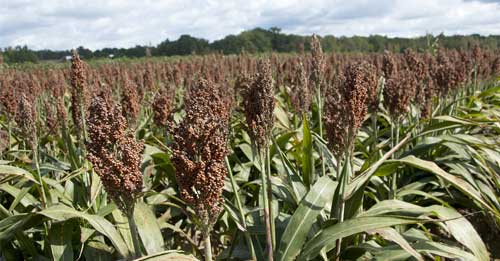Mississippi Sate, Mississippi, USA
September 21, 2012
Timely rains followed by sunny days provided optimal growing conditions for Mississippi’s grain sorghum crop, and yields may be higher than anticipated.
Mississippi producers planted about 63,000 acres in grain sorghum in 2012, up from 50,000 acres in 2011. The state ranked No. 8 nationally in grain sorghum production in 2011.

Erick Larson, grain crops agronomist with the Mississippi State University Extension Service and Mississippi Agricultural and Forestry Experiment Station, said this year’s harvest is proceeding fairly well. The U.S. Department of Agriculture reported the crop 79 percent harvested by Sept. 16.
“We have a few more acres to harvest in the hills of Northeast Mississippi, but most of the crop has been harvested, which is good if we get into some rainy spells,” Larson said. “The rainfall we received from shortly after the Fourth of July through early August was quite helpful and led to productive sorghum crops.”
Most of the major sorghum-growing areas are in the northern part of the state or had already been harvested before Hurricane Isaac came through, Larson said. For the most part, crop damage was minimal.
“Sorghum is quite vulnerable to kernel sprouting,” he said. “Rainy, moist and humid conditions after kernels reach maturity can lead to severe problems if wet conditions persist during harvest season. We’ve generally avoided this potential pitfall this year because we didn’t get as much rainfall as we could have, or it’s gotten bright and sunny after it rained.”
Extension entomology specialist Angus Catchot said the most significant insect pest concern for producers for the last several years has been the headworm complex made up of corn earworms, fall armyworms and sorghum webworms.
“This complex often requires treatment to avoid economic loss,” Catchot said.
Based on the higher-than-predicted yields for corn and soybeans, Larson has high hopes for final sorghum figures.
“I expect sorghum to achieve some pretty good yields, possibly higher than the USDA’s prediction of 77 bushels per acre,” he said. “Historically, the range has been from 65 to 85 bushels per acre, and we’re trending toward the higher side of that.”
Larson said grain sorghum’s role in weed resistance management and its drought tolerance partially explained the 26 percent increase in acres across the state.
“Grain sorghum is a grass crop, and growers might be able to address glyphosate-resistant Palmer amaranth, commonly called pigweed, more effectively in sorghum than in soybeans or cotton, because they can use different types of herbicides,” Larson said. “We’ve also had two extremely droughty years before this summer, and that has made grain sorghum a little more attractive for growers to plant because it’s more drought tolerant than other crops. It is a good alternative to rotate with another crop, such as soybeans.”
Extension agricultural economist Brian Williams said the main driver of grain sorghum acres is the price of corn and soybeans.
“For the most part, all three crops are in direct competition with one another for the same land,” Williams said. “So when sorghum prices are competitive relative to corn or soybeans, they tend to capture more acres.”
Williams said a year ago, Mississippi corn prices were $6.34 per bushel and sorghum prices were $6.22 per bushel, and as a result, Mississippi sorghum acres went up significantly.
“As of Tuesday, Sept. 17, Mississippi cash corn prices were $6.57 and cash sorghum prices were $5.70,” he said. “If this spread holds through the fall, I would expect sorghum acres to be down next year.”
Grain sorghum has some economic advantages over other crops, Williams said.
“First, the cost of production is lower than that of corn because it requires fewer inputs,” he said. “But that must be taken in perspective because sorghum yields are lower than corn yields, as well.
“Perhaps the biggest advantage sorghum has over corn or soybeans is that it is a much hardier plant. Sorghum will flourish on less productive, marginal cropland where corn or soybeans may struggle, which partially explains why the top two producers are Kansas and Texas, both of which are prone to frequent droughts,” he said.